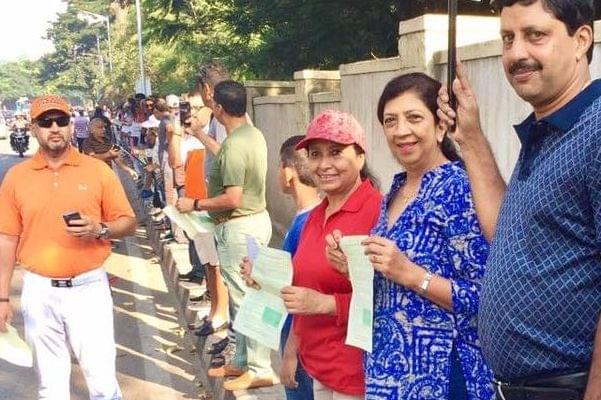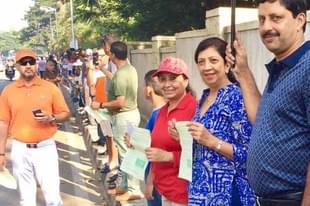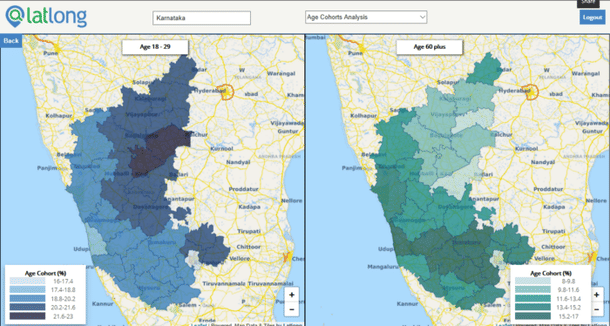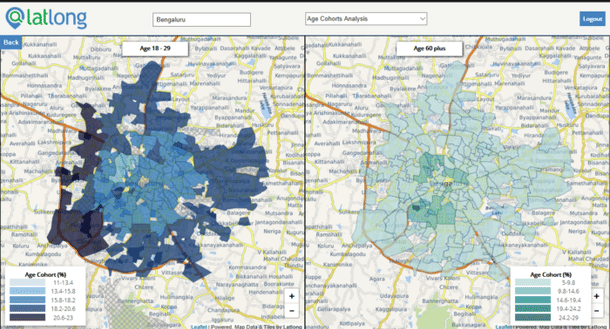Business
The Hyperlocal Indian Market: Why Brands Must Invest in Geospatial Analytics
Puranika Narayana Bhatta
Aug 01, 2019, 09:08 AM | Updated 09:08 AM IST
Save & read from anywhere!
Bookmark stories for easy access on any device or the Swarajya app.


That India is a demographically ‘young’ country is well-known. The median age of the Indian population is about 28 years, while that of China is 37 years. The presence of a young workforce is also referred to as a ‘demographic dividend’.
Of course, there are concomitant challenges of providing employment opportunities for the crores of people entering the workforce every year, substantial migration to areas with higher opportunities and other associated matters.
However, any average invariably misses the layered information beneath that one salient number. One specific aspect that curiously receives very little comment is the geographic heterogeneity of data.
In a complex and socio-economically diverse country such as ours, the geographic dimension plays a significant role in what is happening to population age cohorts.
In this context, it is very heartening to note that the Economic Survey 2019 devotes an entire chapter to discuss age-wise demographics of the Indian population. Chapter 7 estimates that India’s Total Fertility Rate will reach 1.8 by 2021, with a range of 1.5 to 2.5 for different states.
Based on the very different age cohorts in different states, the Survey makes a case for different policy suggestions in these states. One of the examples quoted is in the area of education: elementary schools may have to consolidate to survive in some states, while in other states there is need for more elementary schools.
Not only is age cohort data important for policymakers, it is a vital attribute of consumer profile for a company. Products are created with a certain age demography in mind and awareness of where such population is in higher numbers, helps in targeted marketing as well as in planning inventory in different parts of the marketplace.
So, knowledge of age demographics is critical for any consumer-focused company.
Age Cohorts Vary Significantly Within A State
Latlong estimates that the proportion of Karnataka’s population that is 60+ years old is about 11.9 per cent, while that of Uttar Pradesh is about 8.6 per cent and Tamil Nadu’s is about 13.5 per cent. On the other hand, the proportion of population in colleges and those going fresh into the workforce — i.e. the 18–29 age cohort — in Karnataka, Uttar Pradesh and Tamil Nadu is estimated to be about 19.7 per cent, 21.7 per cent and 19.1 per cent, respectively. The Economic Survey highlights some of these differences in age cohorts across states.
But, what it doesn’t talk about is the fact that even within a given state, the population distribution across age cohorts is quite heterogeneous. A map of Karnataka with Latlong estimates of proportion of population in the 18–29 and 60+ age groups is presented below.

A typical assumption would be that a large metropolis like Bengaluru would attract a large number of young workers and hence, would have a higher share of 18–29 year olds, while other districts away from such growth pockets would have a higher proportion of 60+ year olds. This turns out to be only partially true.
The estimates show that Bengaluru indeed has a lower share of 60+ year olds at about 8.9 per cent, substantially lower than the Karnataka average and much closer to Uttar Pradesh levels. However, Bengaluru also has a lower proportion of 18–29 age cohort at 16.8 per cent, again significantly lower than the Karnataka average.
The 60+ age cohort has a huge range from Bengaluru’s 8.9 per cent to Udupi’s 16.7 per cent. The 18–29 age cohort has a smaller range between Udupi’s 16.4 per cent to Raichur’s 22.5 per cent. Geographically, while the Hyderabad-Karnataka region has a higher proportion of 18–29 year olds, the districts immediately surrounding Bengaluru are estimated with a higher proportion of 60+ year olds.
This data supports the anecdotal information that many youths from districts surrounding Bengaluru tend to move to the city in search of employment opportunities. Also, the Hyderabad-Karnataka region — being one of the lesser developed parts of Karnataka — has per capita income levels similar to the averages of lesser developed states of India. The age cohorts also indicate this similarity.
What is abundantly clear is the fact that districts within a state aren’t homogeneous at all. Now, let us examine an even smaller area, a city.
Age Cohorts Vary Even Across A City
As pointed out earlier, Latlong estimates the proportion of Bengaluru’s population in the 60+ age cohort at about 8.9 per cent, while that of the 18–29 age cohort at 16.8 per cent. These are very different from the state averages, though Bengaluru forms a dominant 18 per cent of the state population.

We again see the heterogeneity of age cohorts within a city like Bengaluru. However, there is a more marked pattern at play in the case of Bengaluru than is the case at the state level. The map clearly shows the central part of Bengaluru (old Bengaluru?!) having lesser proportion of 18–29 year olds and a much higher proportion of 60+ year olds, than the outer areas of the city.
One of the older parts of Bengaluru like Malleswaram has 10.8 per cent of the 60+ age cohort and about 15.3 per cent of the 18–29 age cohort, while Kengeri, one of the newer parts of the city municipality, has 8 per cent and 22 per cent respectively of the same cohorts.
Factors like presence of colleges, in areas like J P Nagar and Banashankari, also cause non-homogeneous distribution of age cohorts. One of the points to note is that in some areas of Bengaluru, like Jayanagar and Malleswaram, there are parents living in the city while their children are typically in another country. Such factors also show up in the age distribution across the city.
To understand how geographical diversity in age cohorts impacts branding and marketing, I spoke to an expert in this field.
Implications For A Marketer
Vivek Sunder, COO at Swiggy and a veteran from the Fast Moving Consumer Goods (FMCG) space, summarises brand implications in two key takeaways:
1. The heterogeneous nature of age cohorts means that consumer profile for a marketer needs to be truly hyperlocal. One cannot operate with a typical profile for Karnataka and one for Tamil Nadu. Consumer profiles need to be at Jayanagar level and Chembur level or even more hyperlocal. This will help brand outreach be very specific to an audience.
2. What product will get consumed in what locality will vary quite sharply, every few hundred metres, with the sharply different age profiles. So, having the right mix of inventory (or restaurants in the case of Swiggy) becomes very critical.
‘Heterogeneity’ of geospatial distribution of population, across any geography is a given, with all its attendant impact on brands. So, brands need to use geospatial analytics to think and execute with ‘hyperlocal’ consumers in mind.
This article has been republished with permission from the author. The original piece can be read here.
Puranika Narayana Bhatta is CEO of Latlong, a software products company.





